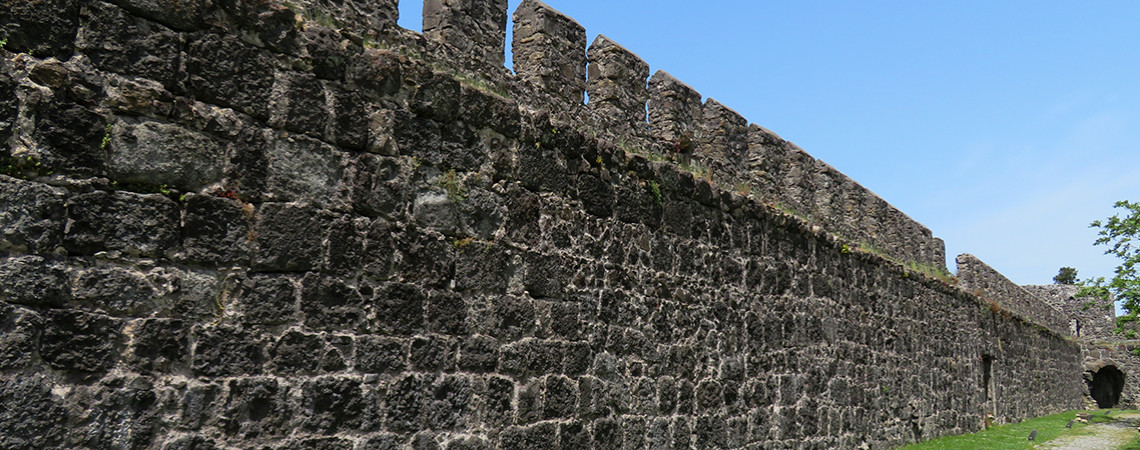The oldest fortress of Georgia – the Gonio Fortress (or the Gonio-Apsaros Fortress) occupying the territory of 4,5 ha is situated in village of Gonio in Adjara, 15 km from Batumi city. The fortress history amounts to several millenniums. The ancient archeological layers, dug in the fortress territory belong to the XV-XVII centuries BC. There exists a legend that the name of Apsaros originates from the ancient Greek myth about Argonauts. According to the legend this was the place where Apsyrtus, King Aet’s son killed by Jason, was buried.
Many legends and myths are connected with the Gonio-Apsaros Fortress. The Fortress territory has a tomb which up to date is considered to be the Apostle Mathew’s tomb – one of twelfth Jesus Christ’s disciples whom Savior accepted to his circle instead of Judas Iscariot. According to one of the versions, Apostle Mathew after Christ’s death came to the Gonio Fortress and stayed there to preach. The Apostle Mathew’s tomb is found in the territory of the Roman Praetorium (from Latin “general's tent”). Since the Gonio-Apsaros Fortress built in the beginning of our era as a base citadel of Roman troops, then a residence of a Roman general, a garrison commander was called as a Praetorium. The Praetorium only survived as huge stone pedestals in a form of crosses presumably standing over the Apostle Mathew’s tomb.
Over the whole history the Gonio Fortress belonged first to the Romans before the Byzantine period and in 1547 the Gonio-Apsaros Fortress was captured by the Ottoman Turks. Only in 1878 under the Treaty of San Stefano, the Gonio Fortress as well as the whole Adjara was passed under protectorate of the Russian Empire. In Soviet time Adjara obtained the status of status of autonomy preserving it for the territory up to date.
Nowadays the Gonio-Apsaros Fortress is a monument of Roman period of the Adjarian history. The Fortress layout and architecture have left almost unchanged over all centuries of its existence. In spite of the fact that a mosque was built opposite to the Saint Mathew’s tomb, and the existed Roman therms were rebuilt into the oriental bath-houses, the general architecture of the Fortress remained the same as it was two thousand years ago under the Romans.
The total wall length amounts to 900 m and the height is 5 m. Initially, twenty two 7m-high towers were built along the Fortress perimeter, but in course of time some of them were destroyed, and today the Fortress has only 18 towers. Once the Fortress had 4 entries and exits, but currently it is only the western entry that survived.
The Gonio-Apsaros Fortress was an important strategic point. Its main function was to protect the entries to the Chorokhi and Acharistskali river gorge which connected the inner regions of the country with Black sea shore. It was the territory where the eastern border of the Roman Empire ran, it made the Gonio Fortress not only a strategically important point but also an economic and cultural center of Eastern Rome, which fact was confirmed by the ruins of a hippodrome and Roman theatre found by archeologists, presumably operating in the I-III centuries AD. This territory is considered to be a place where the first Georgian associations were founded and during the Byzantine period the Fortress territory was a stronghold for Genoese merchants.
The history of the Gonio Fortress still is fraught with mysteries. There, the archaeological excavation are still underway, and the scientists make a lot of new discoveries, such as a buried treasure dating back to the V century AD, revealed near the southern wall in 1974. Based on the important historical and cultural significance of the Gonio Fortress, the Georgian government announced it Reserve Museum in 1994.



